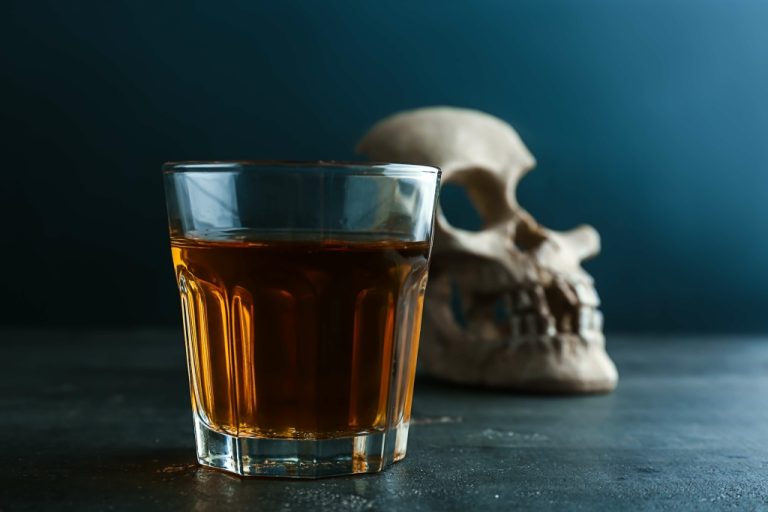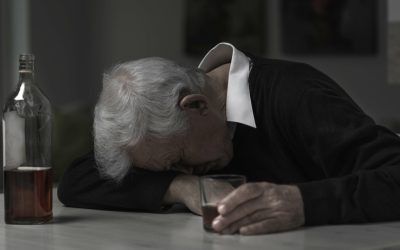Research has found that getting help in the form of supportive therapy from qualified professionals, and social support from peers, can prevent or minimize relapse. In particular, cognitive behavioral therapy (CBT) can help people overcome the fears and negative thinking that can trigger relapse. Today, you will gain a deeper understanding of what relapse is, including different stages of relapse, causes and warning signs, relapse prevention https://topdialog.ru/2012/03/06/%D0%BE%D0%BF%D1%80%D0%BE%D1%81-%D1%82%D1%83%D1%80%D0%B8%D1%81%D1%82%D1%8B-%D0%BF%D1%80%D0%BE%D1%82%D0%B8%D0%B2-%D0%BF%D0%BB%D0%B0%D1%82%D0%BD%D0%BE%D0%B3%D0%BE-%D0%B8%D0%BD%D1%82%D0%B5%D1%80%D0%BD/ strategies, and where you can find help after an alcohol relapse. From a clinical standpoint, this is important because it underscores the value of these models in identifying and evaluating new treatment strategies that may be more effective in battling the problem of relapse. Like treatment for other chronic diseases such as heart disease or asthma, addiction treatment is not a cure, but a way of managing the condition.
Seeking A Fentanyl Vaccine Breakthrough
- This latter finding suggests that elevated alcohol self-administration does not merely result from long-term alcohol exposure per se, but rather that repeated withdrawal experiences underlie enhanced motivation for alcohol seeking/consumption.
- Armed with such knowledge, you can develop a contingency plan to help you avoid or cope with such situations in the future.
- It usually requires professional treatment for people to become sober.
- The study findings echo the literature that describes relapse as a complex multifactorial phenomenon.
Use of a substance delivers such an intense and pleasurable “high that it motivates people to repeat the behavior, and the repeated use rewires the brain circuitry in ways that make it difficult to stop. Evidence shows that eventually, in the months after stopping substance use, the brain rewires itself so that craving diminishes and the ability to control behavior increases. The brain is remarkably plastic—it shapes and reshapes itself, adapts itself in response to experience and environment. At this stage, a person might not even think about using substances, but there is a lack of attention to self-care, the person is isolating from others, and they may be attending therapy sessions or group meetings only intermittently. Attention to sleep and healthy eating is minimal, as is attention to emotions and including fun in one’s life.
Relapse Prevention Strategies
Thinking about and romanticizing past drug use, hanging out with old friends, lying, and thoughts about relapse are danger signs. Individuals may be bargaining with themselves about when to use, imagining http://uzbeksteel.com/2012-09-21-17-46-03/626-chtpz-sootvetstvuet-mezhdunarodnym-standartam that they can do so in a controlled way. Coping skills can keep thoughts from escalating into substance use. Alcohol relapse doesn’t mean that you or your treatment program has failed.
- People who become overconfident in their ability to stay sober may put themselves at risk by decreasing recovery meeting attendance, exposing themselves to triggers or trying to control how much they drink instead of abstaining.
- At that time, there is typically a greater sensitivity to stress and lowered sensitivity to reward.
- The adaptations make the brain crave alcohol, which makes it harder to quit drinking.
- Research has found that getting help in the form of supportive therapy from qualified professionals, and social support from peers, can prevent or minimize relapse.
- Take a look at the most recent recovery, relapse, and sobriety statistics on alcohol use disorder (AUD) to help you better understand the scope of this issue.
- Medical professionals characterize this condition as a pattern of uncontrolled drinking, and the inability to stop or control alcohol misuse despite its negative impact on your life.
Going to Treatment After a Relapse

An additional predictor of relapse at 6 months was shorter number of days of abstinence prior to treatment entry. A combination of psychosocial factors may be protective for maintaining a longer period of abstinence prior to seeking treatment for AUD, including current employment, prior treatment history, and/or court-ordered sobriety following incarceration. Additionally, the greater length of sobriety prior to treatment demonstrated by abstainers may reflect greater levels of self-efficacy, coping skills and resource utilization, and stronger social support systems (Moos and Moos, 2006, 2007). These studies clearly point to the PSL circuit as a critical early target of alcohol effects and its potential, deleterious impact on neuroplasticity with chronic alcohol abuse.
- They are typically triggered by people, places, paraphernalia, and passing thoughts in some way related to previous drug use.
- Most common reasons cited for relapse in both the groups was desire for positive mood [Table 4], followed by sleep difficulties and negative affect in alcohol dependence and craving and sleep difficulties in opioid dependence.
- The graph below illustrates the national relapse rates for different addictions.
- If you are at a gathering where provocation arises because alcohol or other substances are available, leave.
- Relapse often occurs during the recovery process, and there are options available to you if you do relapse.
The cycle of addiction
The information we provide is not intended to be a substitute for professional medical advice, diagnosis or treatment. It should not be used in place of the advice of your physician or other qualified healthcare providers. Alcoholism is a chronic disease that takes months or years of treatment and support to recover from. It takes years to conduct studies on people recovering from alcoholism. That’s why 2017 and 2018 alcohol relapse statistics aren’t available yet. However, studies published in recent years provide a picture of current relapse rates.
Renewal Center for Ongoing Recovery
Perhaps the most important thing to know about cravings is that they do not last forever. It is also necessary to know that they are not a sign of failure; they are inevitable. But their lifespan can be measured in minutes—10 or 15—and that enables people to summon ways to resist them or ride them out. Creating a rewarding life that is built around personally meaningful https://mostiks.ru/unikalnoe-omolozhenie-litsa-v-domashni/ goals and activities, and not around substance use, is essential. Recovery is an opportunity for creating a life that is more fulfilling than what came before. Attention should focus on renewing old interests or developing new interests, changing negative thinking patterns, and developing new routines and friendship groups that were not linked to substance use.

Factors Contributing to the Fourth Wave
Opioid addiction can lead to drug-seeking and risk-taking behavior. Those who are struggling with addiction may steal, get into debt or behave in other ways that put their relationships and families at risk. These behaviors can have a long-lasting impact on communities, especially in rural areas, reducing the overall quality of life and damaging the economy in those neighborhoods. This is a dangerous trend, as combining drugs in this way can increase the risk of overdose and lessen responses to the drugs used to treat an overdose. These drugs can be a lifeline for people experiencing severe or chronic pain, but in addition to being powerful painkillers, they also create a feeling of confidence and euphoria, which leads to some people abusing them.
The importance of relapse prevention plans
In summary, alcohol relapse statistics reveal the complex nature of addiction recovery and highlight the importance of a comprehensive approach to treatment. Factors such as age, gender, mental health conditions, and support systems can significantly influence an individual’s likelihood of relapse. No matter how much abstinence is the desired goal, viewing any substance use at all as a relapse can actually increase the likelihood of future substance use. It can engage what has been termed the Abstinence Violation Effect. It encourages people to see themselves as failures, attributing the cause of the lapse to enduring and uncontrollable internal factors, and feeling guilt and shame. Relapse represents a major challenge to treatment efforts for people suffering from alcohol dependence.

The distinction is critical to make because it influences how people handle their behavior. A relapse is a sustained return to heavy and frequent substance use that existed prior to treatment or the commitment to change. A slipup is a short-lived lapse, often accidental, typically reflecting inadequacy of coping strategies in a high-risk situation.

I don’t think the title of your article matches the content lol. Just kidding, mainly because I had some doubts after reading the article.
Добрый день!
Долго не спал и думал как поднять сайт и свои проекты и нарастить DR и узнал от друзей профессионалов,
профи ребят, именно они разработали недорогой и главное лучший прогон Xrumer – https://www.bing.com/search?q=bullet+%D0%BF%D1%80%D0%BE%D0%B3%D0%BE%D0%BD
Предлагаю линкбилдинг использовать с Xrumer для ускорения продвижения. Линкбилдинг сервис позволяет экономить время. Линкбилдинг интернет магазина помогает продажам. Каталоги линкбилдинг дают качественные ссылки. Линкбилдинг сервисы упрощают работу специалистов.
курсы продвижение сайта спб, seo читать онлайн, Как собрать базу для Xrumer
Автоматический линкбилдинг Xrumer, теги заголовков в seo, поисковой оптимизации seo
!!Удачи и роста в топах!!
Привет всем!
Долго обмозговывал как поднять сайт и свои проекты и нарастить ИКС Яндекса и узнал от гуру в seo,
топовых ребят, именно они разработали недорогой и главное продуктивный прогон Хрумером – https://www.bing.com/search?q=bullet+%D0%BF%D1%80%D0%BE%D0%B3%D0%BE%D0%BD
Линкбилдинг курс ускоряет обучение специалистов. Линкбилдинг Москва предоставляет локальные возможности для продвижения. Линкбилдинг курсы позволяют освоить техники Xrumer. Линкбилдинг план помогает системно создавать ссылки. Линкбилдинг правила обеспечивают соблюдение безопасных методов продвижения.
wordpress seo meta, лучшие плагины для wordpress seo, Программное обеспечение для постинга
линкбилдинг что это простыми словами, техника продвижения сайта в, продвижение сайтов крым
!!Удачи и роста в топах!!